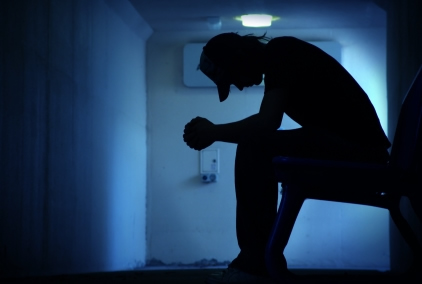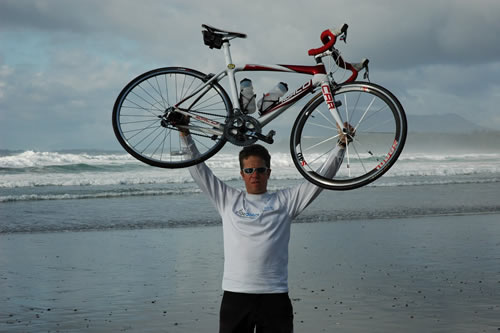More than 50 million Americans suffer from mental illness or mental disorder. Because most of them are not severe and many go untreated, it may be helpful to understand the science behind what causes mental illness and how it manifests itself in everyday life

Source: The Science of Mental Illness
Published: February 16, 2012

image:stockXpert
The CDC report showed that between 2008 and 2009, the suicide rate increased 2.4 percent, with 36,909 suicide deaths reported nationally. In August 2011, a report from the CDC showed that in 2008, 13.4 percent of people who committed suicide had experienced job and financial problems. The National Suicide Prevention Lifeline, an emergency crisis hotline reported a 14 percent increase in call volume between 2010 and 2011. The CDC’s thus recommended increasing counseling, job placement and financial services that can help reduce the mental distress that can increase suicide risk.
“The recent increase in suicide, whether heightened by economic strain or other social triggers, signifies the need for education and training on understanding and preventing suicide,” said Dr. Lisa Firestone, Director of Research and Education at The Glendon Association and Violence and Suicide Prevention Alliance. “The suicidal state is both preventable and treatable. Services and education have been proven to save lives. Armed with the right tools to identify the warning signs and implement helper tasks, we can fight this crisis.”
[continue reading…]
Published: January 21, 2012
 Anew national report reveals that 45.9 million American adults aged 18 or older, or 20 percent of this age group, experienced mental illness in the past year. The rate of mental illness was more than twice as high among those aged 18 to 25 (29.9 percent) than among those aged 50 and older (14.3 percent). Adult women were also more likely than men to have experienced mental illness in the past year (23 percent versus 16.8 percent).
Anew national report reveals that 45.9 million American adults aged 18 or older, or 20 percent of this age group, experienced mental illness in the past year. The rate of mental illness was more than twice as high among those aged 18 to 25 (29.9 percent) than among those aged 50 and older (14.3 percent). Adult women were also more likely than men to have experienced mental illness in the past year (23 percent versus 16.8 percent).
Mental illness among adults aged 18 or older is defined as having had a diagnosable mental, behavioral, or emotional disorder (excluding developmental and substance use disorders) in the past year, based on criteria specified in the Diagnostic and Statistical Manual of Mental Disorders (DSM-IV; American Psychiatric Association [APA], 1994).
The Substance Abuse and Mental Health Services Administration’s (SAMHSA) National Survey on Drug Use and Health also shows that 11.4 million adults (5 percent of the adult population) suffered from serious mental illness in the past year. Serious mental illness is defined as one that resulted in serious functional impairment, which substantially interfered with or limited one or more major life activities. [continue reading…]
Published: November 12, 2011

Mental health advocate Michael Schratter completed his epic worldwide solo cycling journey in Vancouver today after crossing six continents and 33 countries over 469 days. (CNW Group/Canadian Mental Health Association, BC Division)
fter a courageous solo bicycle trek around the world, crossing six continents and 33 countries, mental health advocate and Vancouver school teacher Michael Schratter is finally home.
His worldwide, 469-day “Ride Don’t Hide” cycling journey has made an indelible impact, raising awareness and helping to overcome the stigma around mental illness for the one in five Canadians who suffer from mental health issues such as depression, anxiety disorders and schizophrenia.
Today, mental health supporters welcomed Michael home as more than 200 cycled along with him from Tsawwassen and Richmond into Vancouver for a celebration event at Rogers Arena, completing his journey. There, Michael shared his adventures from his worldwide trek and personal story with a large crowd of supporters and fans, including Vancouver Canucks owner Francesco Aquilini and General Manager Mike Gillis, who cycled the final leg with Michael.
A Vancouver school teacher diagnosed with bi-polar disorder, Michael began his “Ride Don’t Hide” campaign on August 1, 2010 with the goal of cycling 40,000 km around the globe, and raising $100,000 for the Canadian Mental Health Association’s youth programs.
All he had was a bike, a knapsack and a determination to live out a dream to create awareness and help empower people dealing with mental health challenges. He started out in Vancouver, rode down through the west coast of the United States, Mexico and South America, flew over to the east coast of Australia and cycled up through Asia and then hopped over to Europe. He did all of this by taking a year off from his job as a grade five teacher, using his own funds to finance the journey as he travelled the globe. [continue reading…]




